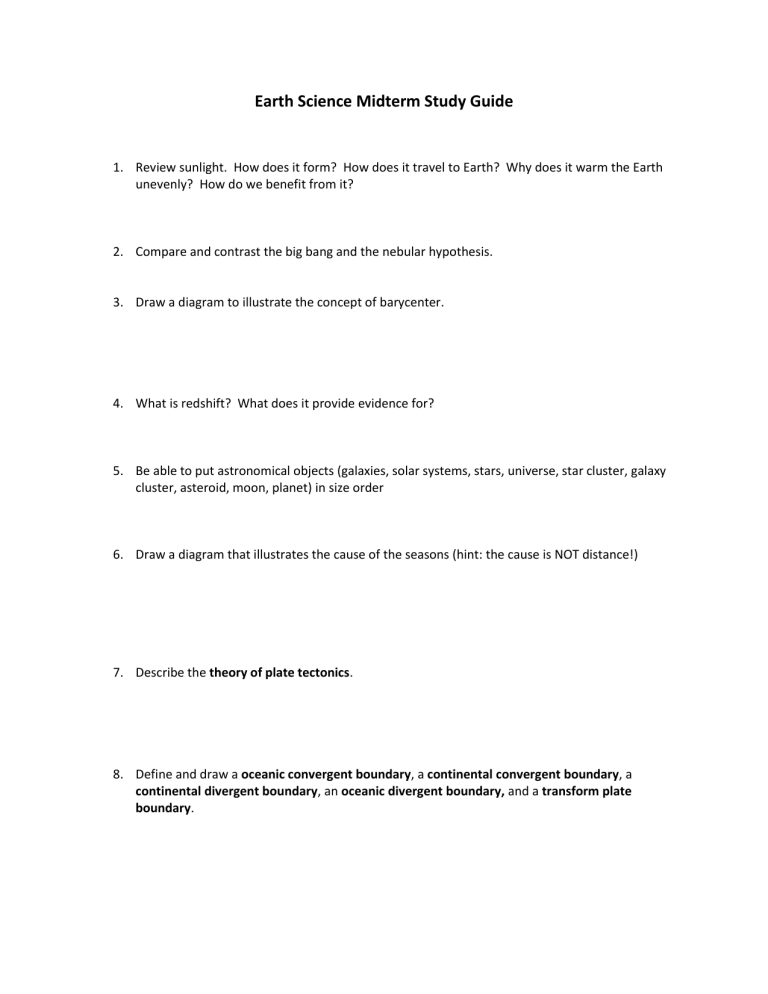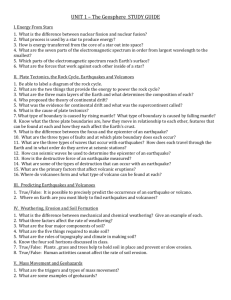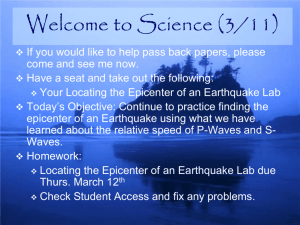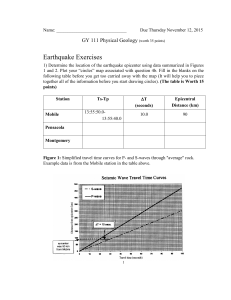
Earth Science Midterm Study Guide 1. Review sunlight. How does it form? How does it travel to Earth? Why does it warm the Earth unevenly? How do we benefit from it? 2. Compare and contrast the big bang and the nebular hypothesis. 3. Draw a diagram to illustrate the concept of barycenter. 4. What is redshift? What does it provide evidence for? 5. Be able to put astronomical objects (galaxies, solar systems, stars, universe, star cluster, galaxy cluster, asteroid, moon, planet) in size order 6. Draw a diagram that illustrates the cause of the seasons (hint: the cause is NOT distance!) 7. Describe the theory of plate tectonics. 8. Define and draw a oceanic convergent boundary, a continental convergent boundary, a continental divergent boundary, an oceanic divergent boundary, and a transform plate boundary. 9. What landforms are created by each of the above plate boundaries? (Don’t forget you have different types of crust that are interacting with one another.) 10. What is subduction? 11. What is a hot spot? 12. What is the driving force of plate movement? 13. What is an earthquake? Define the focus and epicenter of an earthquake. 14. Earthquakes usually occur along a _____________ line. 15. What types of waves are produced from an earthquake? Which one travels the fastest? Which one is the slowest? 16. What information about earth’s interior can we get from earthquake waves? 17. What is the minimum number of seismic stations needed to determine the location of an earthquake’s epicenter? 18. List some factors that affect the amount of destruction caused by an earthquake. 19. What is a tsunami? 20. According to Figure 8-1, what is the distance between the seismic station and an earthquake epicenter, if the first S wave arrives 6.0 minutes after the first P wave? 21. Use the graph in Figure 8-1 to determine the difference in the travel-times between the first P wave and the first S wave, if the seismic station is 500 miles from the epicenter. 22. Rock Cycle – Draw a picture of the rock cycle that includes the following terms. Sedimentary Rocks, Metamorphic Rocks, Igneous Rocks, Heat and Pressure, Weathering, Sediments, Compaction and Cementation, Melting, and Lava 23. Define chemical weathering. 24. Define mechanical weathering. 25. Describe frost wedging. 26. List factors that affect the rate of weathering. 27. What are the components of healthy soil? 28. What determines soil texture? 29. Use a soil texture diagram (ONLINE) to answer the following questions: a. b. c. What is the soil texture given the following composition 50% clay, 30% silt, 20% sand? What is the soil texture given the following composition 10% clay, 40% silt, 50% sand? What is the soil texture given the following composition 30% clay, 50% silt, 20% sand? 30. What human activities can increase soil erosion? 31. What human activities can reduce soil erosion? 32. Define longshore drift. 33. Define, draw, and list a disadvantage for the following beach erosion prevention structures: a. b. c. d. e. sea wall breakwater groin beach nourishment vegetation 34. What are some uses of fresh water? What percentage of all the water available is useable freshwater? 35. Define point source and non-point source pollution. Give an example of each. 36. Draw the water cycle. Be sure to include the terms: evaporation, condensation, precipitation, transpiration, surface runoff, and infiltration.






